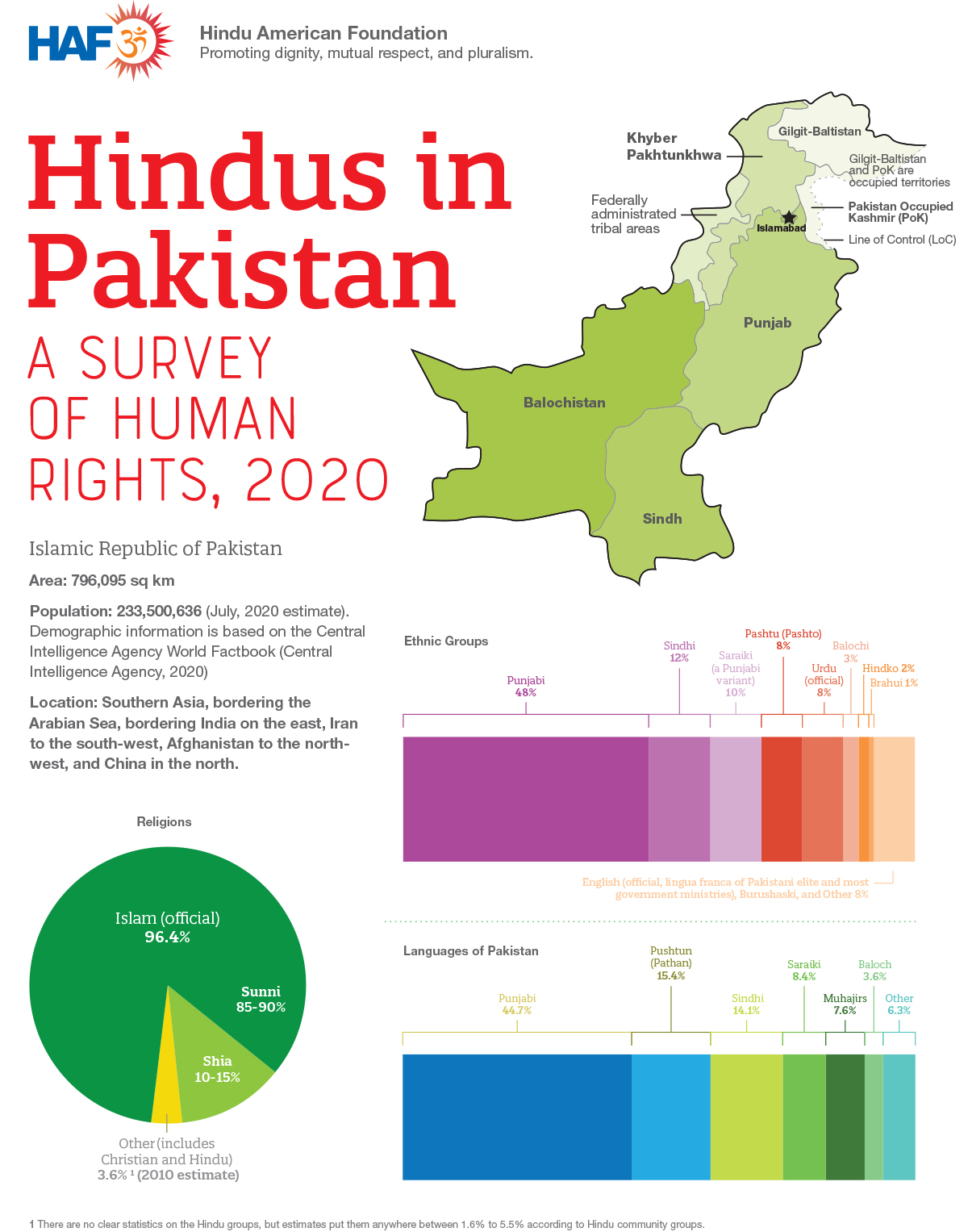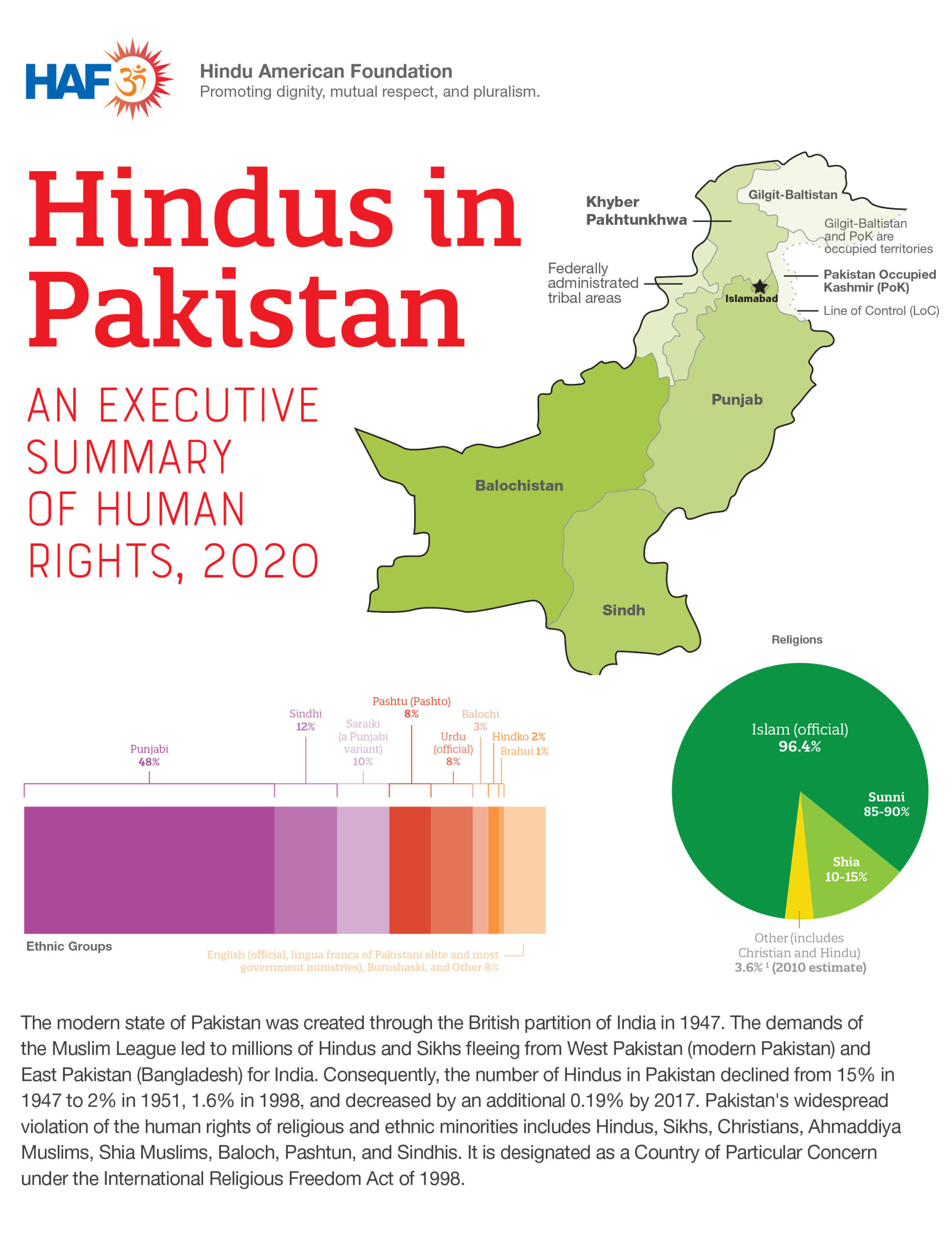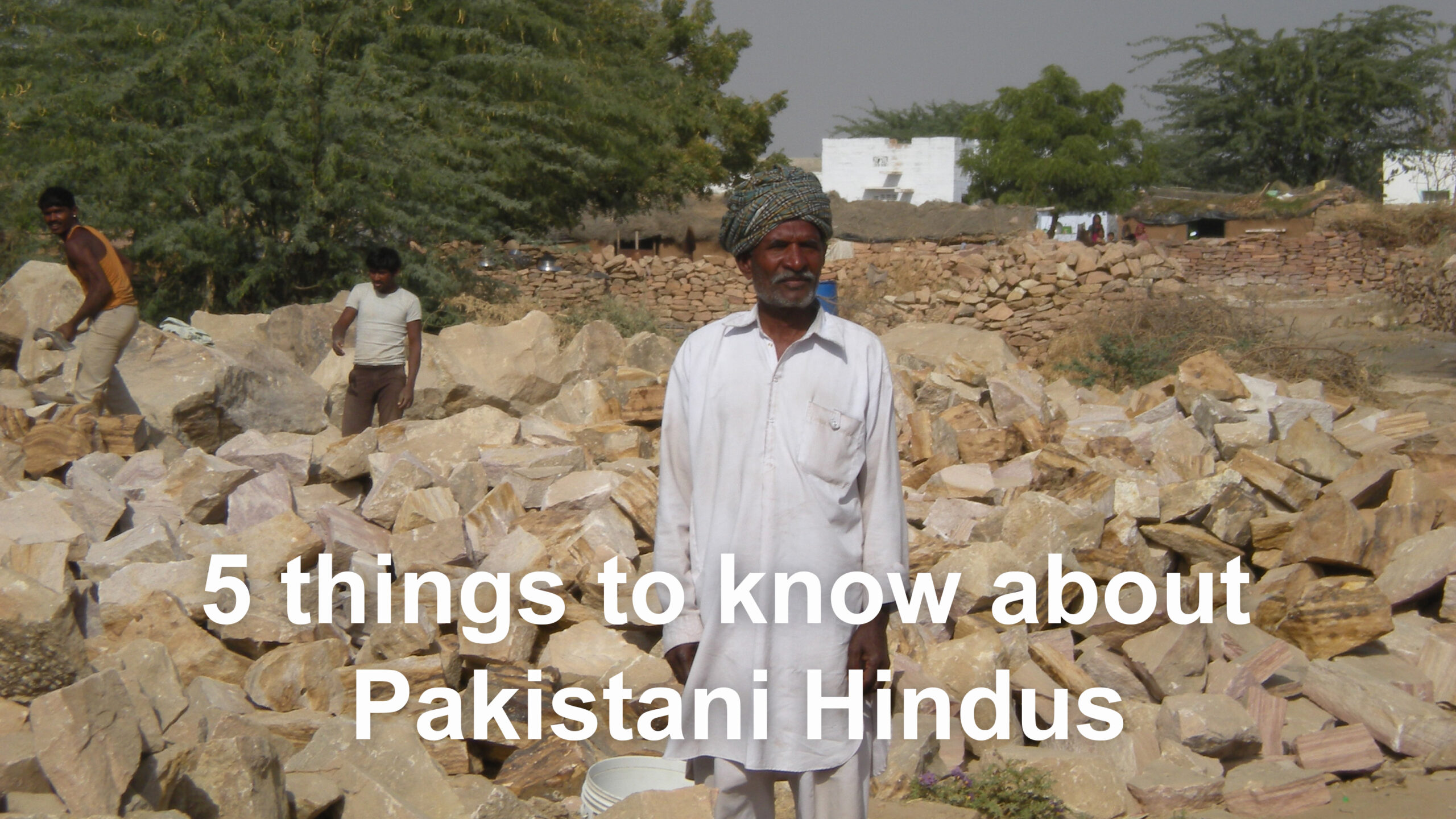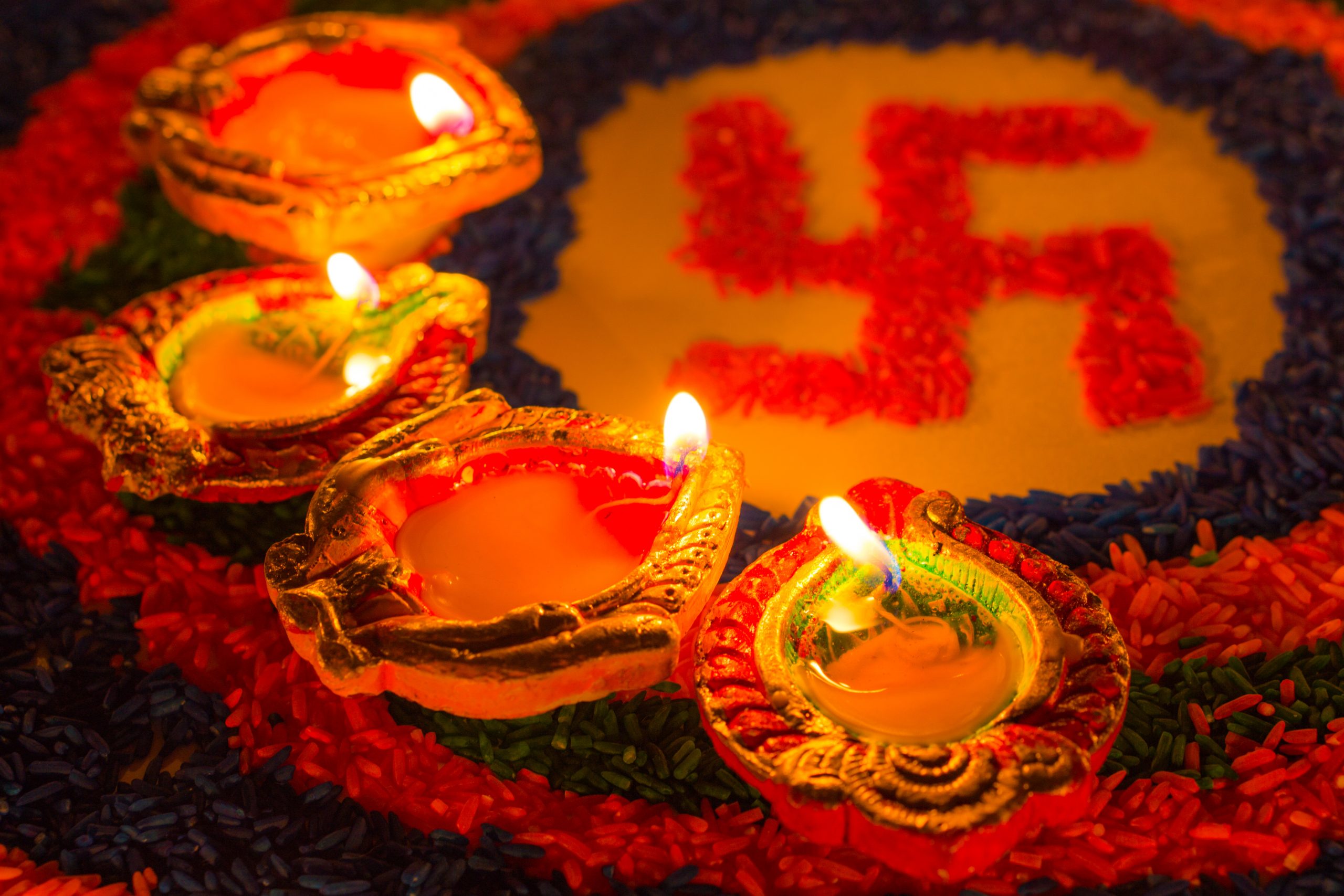Ahmad, N. (2014, February 19). Pakistan Faces Criticism for Harsh Blasphemy Law. Religion News Service. http://www.religionnews.com/2014/02/19/pakistan-faces-criticism-harsh-blasphemy-law/
Ahmad, S., Amin, A., & Arif, M. S. (2020, February 24). The fate of Lahore’s Hindu temples show the city’s shift from a cosmopolitan to monolithic culture. Scroll India. https://scroll.in/article/953783/the-fate-of-lahores-hindu-temples-show-the-citys-shift-from-a-cosmopolitan-to-monolithic-culture
Ahmed, A. (2020, June 15). The Quran learning made mandatory for university students in Punjab. Gulf News. https://gulfnews.com/world/asia/pakistan/the-quran-learning-made-mandatory-for-university-students-in-punjab-1.72051304
Ameer, H. (2020, January 27). Pakistan: Hindu woman abducted from wedding, forcibly converted, married off. India Today. https://www.indiatoday.in/world/story/pakistan-hindu-woman-abducted-from-wedding-forcibly-converted-married-off-1640388-2020-01-27
Amnesty International. (2019, March 27). Pakistan: Enduring Forced Disappearances. Amnesty International. https://www.amnesty.org/en/latest/research/2019/03/pakistan-enduring-enforced-disappearances/
Andrei, M. (2016, April 18). Study: Pakistan’s public school textbooks portray non-Muslim citizens as “religiously inferior, scheming and intolerant”. ZME Science. http://www.zmescience.com/science/news-science/pakistan-religion-17042016/
ANI. (2019, December 18). Imran Khan threatens India with nuclear war over citizenship law. Live Mint. https://www.livemint.com/news/india/imran-khan-threatens-india-with-nuclear-war-over-citizenship-law-11576678903721.html
ANI. (2020, April 1). Discrimination amid pandemic: Pakistan denies food supplies to Hindus, Christians as coronavirus rages. The New Indian Express. https://www.newindianexpress.com/world/2020/apr/01/discrimination-amid-pandemic-pakistan-deny-food-supplies-to-hindus-christians-as-coronavirus-rages-2124304.html
Aqeel, A. (2019, May 10). Asia Bibi’s Cell Now Holds Another Christian Woman on Death Row for Blasphemy. Christianity Today. https://www.christianitytoday.com/news/2019/may/asia-bibi-lawyer-malook-shagufta-shafqat-blasphemy-pakistan.html
Baabar, M., & Mir, A. (2006, January 23). Many Hindus are Leaving Pakistan. Outlook India. http://www.outlookindia.com/fullprint.asp?choice=2&fodname=20060123&fname=Cover+Story&sid=1
Baloch Human Rights Organization. (2019, July 28). Balochistan: The State of Human Rights. Bi-Annual Report 2019. Baloch Human Rights Organization. https://balochhumanrights.org/balochistan-the-state-of-human-rights-bi-annual-report-2019/
Bandow, D. (2018, October 29). Desperate Pakistani Christians Languish in Thailand. Cato Institute. https://www.cato.org/publications/commentary/desperate-pakistani-christians-languish-thailand
BBC. (2016, December 28). Balochistan War: Pakistan Accused Over 1,000 Dumped Bodies. BBC News. http://www.bbc.com/news/world-asia-38454483
BBC. (2019, April 13). Pakistan Hazara Minority Protests After Bombing in Quetta. BBC News. https://www.bbc.com/news/world-asia-47921535
BBC. (2019, May 8). What are Pakistan’s blasphemy laws? BBC News. https://www.bbc.com/news/world-asia-48204815
BBC. (2019, September 18). Pakistan Blasphemy Riots: Dozens Arrested After Hindu Teacher Accused. BBC News. https://www.bbc.com/news/world-asia-49714196
Bilal, M. (2017, April 19). NA approves compulsory teaching of Quran in schools. Dawn. https://www.dawn.com/news/1327958/na-approves-compulsory-teaching-of-quran-in-schools
Bukhari, M. (2019, May 7). Militant Bomb Near Sufi Shrine Kills 10 in Pakistan’s Lahore. Reuters. https://www.reuters.com/article/us-pakistan-blast/militant-bomb-near-sufi-shrine-kills-10-in-pakistans-lahore-idUSKCN1SE0C2
Central Intelligence Agency. (2020, September 16). The World Factbook: Pakistan. Central Intelligence Agency. https://www.cia.gov/library/publications/the-world-factbook/geos/pk.html
Chaudhuri, A. R. (2012, March 8). Gilgit Baltistan: Pakistan’s Growing Travails and India’s Inexplicable Silence. Institute for Defence Studies and Analyses. https://idsa.in/idsacomments/GilgitBaltistanPakistansGrowingTravailsandIndiasInexplicableSilence_arcgaydgyru_280312
Chaudhury, D. R. (2019, August 31). Pakistan’s failure to protect Sikhs casts shadow over Kartarpur corridor. Economic Times. https://economictimes.indiatimes.com/news/politics-and-nation/pakistans-failure-to-protect-sikhs-casts-shadow-over-kartarpur-corridor/articleshow/70922118.cms?from=mdr
Correspondent (2019, July 5). Hindu community protests against kidnappings, ‘forced’ conversion. Dawn. https://www.dawn.com/news/1492126
Department of State, U.S. (2020). PAKISTAN 2019 INTERNATIONAL RELIGIOUS FREEDOM REPORT. In 2019 INTERNATIONAL RELIGIOUS FREEDOM REPORT (p. 36). U.S. Department of State. https://www.state.gov/wp-content/uploads/2020/05/PAKISTAN-2019-INTERNATIONAL-RELIGIOUS-FREEDOM-REPORT.pdf
The Express Tribune. (2012, January 2). Three to Eight Million People Work as Bonded Labour in Pakistan. The Express Tribune. http://tribune.com.pk/story/315246/debt-bondage-three-to-eight-million-people-work-as-bonded-labour-in-pakistan/
The Express Tribune. (2012, May 22). Minority Rights: Hindu Members Suggest Interfaith Marriage Body. The Express Tribune. http://tribune.com.pk/story/382232/minority-rights-hindu-members-suggest-interfaith-marriage-body/
Freedom House. (2020). Freedom in the World 2020: Pakistani Kashmir. Freedom House. https://freedomhouse.org/country/pakistani-kashmir/freedom-world/2020
Goyal, D. (2020, January 7). Two years after it counted population, Pakistan silent on minority numbers. Indian Express. https://indianexpress.com/article/india/2-yrs-after-it-counted-population-pakistan-silent-on-minority-numbers-6203547/
Habib, M. A. (2019, October 5). Hard Times Have Pakistani Hindus Looking to India, Where Some Find Only Disappointment. The New York Times. https://www.nytimes.com/2019/10/05/world/asia/pakistan-hindu-india-modi.html
Habib, M. A. (2020, July 8). Islamists block construction first Hindu temple in Islamabad. The New York Times. https://www.nytimes.com/2020/07/08/world/asia/hindu-temple-islamabad-islamists-pakistan.html
Hasan, A., Zaidi, A., & Younus, M. (1999). Understanding Karachi: Planning and Reform for the Future. City Press.
Human Rights Watch. (1999). Crime or Custom? Human Rights Watch. https://www.hrw.org/reports/1999/pakistan/Pakhtml-03.htm
Human Rights Watch. (2019). World Report 2019: Pakistan. Human Rights Watch. https://www.hrw.org/world-report/2019/country-chapters/pakistan
IANS (2020, August 24). Pakistan demolishes Hanuman temple, Hindu homes in Karachi. National Herald India. https://www.nationalheraldindia.com/international/pakistan-demolishes-hanuman-temple-hindu-homes-in-karachi
Inayat, N. (2019, June 6). Forced Marriages, Conversions Spike in Pakistan. Religion News Service. https://religionnews.com/2019/06/06/forced-conversions-marriages-spike-in-pakistan/
Indian Census. (2011). Religion Census 2011. Population Census 2011. https://www.census2011.co.in/religion.php
The Institute on Religion & Public Policy. (2013, November 18). Institute on Religion and Public Policy Report: Religious Freedom in the Islamic Republic of Pakistan. The Institute on Religion & Public Policy. https://www.justice.gov/sites/default/files/eoir/legacy/2013/11/18/Pakistan%20Immigration%20Report.pdf
International Human Rights Council. (2018, June 11). Pakistan: Enforced Disappearances in Sindh Province Must Be Stopped. International Human Rights Council. https://ihrchk.org/2018/06/11/ihrc-003-stm-2018/
Johari, A., & Lalwani, V. (2019, December 14). Citizenship Act is welcome, say Hindu refugees from Pakistan – but the process is too tiresome. Scroll India. https://scroll.in/article/946792/hindu-refugees-from-pakistan-welcome-the-citizenship-act-but-say-they-are-fed-up-of-the-process
Kalra, S. (2013). Victims of History: The Untold Story of Pakistani Hindu Refugees in India. Hindu American Foundation. https://www.hinduamerican.org/wp-content/uploads/2020/03/Victims-of-history-untold-story-pakistani-hindu-refugees-india.pdf
Majumdar, S. (2018, June 29). 5 facts about religion in India. Fact Tank, Pew Research Center. https://www.pewresearch.org/fact-tank/2018/06/29/5-facts-about-religion-in-india/
Masood, S. (2019, May 30). Hindu Veterinarian Is Latest to Face Blasphemy Charges in Pakistan. The New York Times. https://www.nytimes.com/2019/05/30/world/asia/pakistan-blasphemy-law.html
McDermott, M. (2019, June 19). The Kashmir conflict isn’t about independence and democracy. It’s about expanding theocracy in South Asia. On The Issues, Hindu American Foundation. https://www.hinduamerican.org/blog/kashmir-conflict-expanding-theocracy-south-asia/
National Assembly of Pakistan. (2012, February 28). The Constitution of the Islamic Republic of Pakistan. National Assembly of Pakistan. http://www.na.gov.pk/uploads/documents/1333523681_951.pdf
Ochab, E. U. (2020, May 8). Yet Another Girl In Pakistan Abducted, Forcibly Converted And Forcibly ‘Married’ To Her Abductor. Forbes. https://www.forbes.com/sites/ewelinaochab/2020/05/08/yet-another-girl-in-pakistan-abducted-forcibly-converted-and-forcibly-married-to-her-abductor/#1e96a66274da
Outlook India. (2018, October 11). 70 Pakistani Asylum Seekers To Be Deported From Thailand. Outlook India. https://www.outlookindia.com/website/story/70-pakistani-asylum-seekers-to-be-deported-from-thailand/318168
Pakistan Bureau of Statistics. (n.d.). Population by Religion. Pakistan Bureau of Statistics. http://www.pbs.gov.pk/sites/default/files//tables/POPULATION%20BY%20RELIGION.pdf
Pakistan Penal Code. (n.d.). Pakistan Penal Code. Pakistani.org. http://www.pakistani.org/pakistan/legislation/1860/actXLVof1860.html
Pompeo, M. R. (2019, December 20). Press Statement: United States Takes Action Against Violators of Religious Freedom. U.S. Department of State. https://www.state.gov/united-states-takes-action-against-violators-of-religious-freedom/
Press Trust of India. (2020, February 20). Pakistan Court Nullifies Converted Minor Hindu Girl’s Marriage. NDTV. https://www.ndtv.com/world-news/pakistan-court-nullifies-converted-minor-hindu-girls-marriage-2182816
PTI. (2017, February 18). Pakistan Senate passes landmark Hindu marriage bill. The Hindu. https://www.thehindu.com/news/international/Pakistan-Senate-passes-landmark-Hindu-marriage-bill/article17324249.ece
PTI. (2020, January 23). Pakistan court sends 15-year-old Hindu girl to women protection centre after forced conversion, marriage. Times of India. https://timesofindia.indiatimes.com/world/pakistan/pakistan-court-sends-15-year-old-hindu-girl-to-women-protection-centre-after-forced-conversion-marriage/articleshow/73548052.cms
Rabwah Times. (2016, September 4). Thousands of Ahmadis Fleeing Persecution in Pakistan and Seeking Asylum Overseas. Rabwah Times. https://www.rabwah.net/thousands-of-ahmadis-fleeing-persecution-in-pakistan-and-seeking-asylum-overseas/
Raj, S. (2019, January 22). Safe But Betrayed: Pakistani Hindu Refugees in India. The Diplomat. https://thediplomat.com/2019/01/safe-but-betrayed-pakistani-hindu-refugees-in-india/
Rana, Y. (2020, January 4). Mob attacks Sikh shrine Nankana Sahib in Pakistan. Times of India. https://timesofindia.indiatimes.com/world/pakistan/muslims-mob-attack-gurdwara-nankana-sahib-with-stones/articleshow/73088062.cms
Reuters. (2007, July 10). FACTBOX: Key facts about Pakistan’s Islamic madrasas. Reuters. https://www.reuters.com/article/us-pakistan-mosque-madrasas-idUSISL30141320070711
Rodriguez, A. (2012, April 22). Hindus in Pakistan Accuse Muslims of Kidnappings Teens as Wives. The Los Angeles Times. https://www.latimes.com/world/la-xpm-2012-apr-22-la-fg-pakistan-hindu-conversions-20120423-story.html
Rubin, M. (2020, August 22). Pakistan’s Kashmir Hypocrisy. Washington Examiner. https://www.washingtonexaminer.com/opinion/pakistans-kashmir-hypocrisy
SATP. (2017). Pakistan Assessment 2017. South Asia Terrorism Portal. http://www.satp.org/satporgtp/countries/pakistan/index.htm
SATP. (n.d.). Pakistan – Terrorist, insurgent, and extremist groups. South Asian Terrorism Portal. https://satp.org/terrorist-groups/pakistan
Shahid, K. K. (2019, September 23). After Ghotki, Pakistan Should Abandon its Glorification of Temple Vandalizers. The Diplomat. https://thediplomat.com/2019/09/after-ghotki-pakistan-should-abandon-its-glorification-of-temple-vandalizers/#:~:text=After%20Ghotki%2C%20Pakistan%20Should%20Abandon%20its%20Glorification%20of%20Temple%20Vandalizers,-September%2023%2C%202019&text=Last%20we
Shahid, K. K. (2020, September 17). What Role Does the State Play in Pakistan’s Anti-Shia Hysteria? The Diplomat. https://thediplomat.com/2020/09/what-role-does-the-state-play-in-pakistans-anti-shia-hysteria/
Shakir, N. (2016, September 3). Why the reservation of seats for minorities in Pakistan’s Assembly is farcical. Scroll India. https://scroll.in/article/815298/why-the-reservation-of-seats-for-minorities-in-pakistans-assembly-is-farcical
Sherwood, H. (2019, May 8). Asia Bibi begins new life in Canada – but her ordeal may not be over. The Guardian. https://www.theguardian.com/world/2019/may/08/asia-bibi-begins-new-life-in-canada-but-her-ordeal-may-not-be-over
Shia Rights Watch. (2017, July 15). Rising Tide. Shia Rights Watch. http://shiarightswatch.org/rising-tide/
Sindhi Foundation. (2020, March). Daughters Gone Forever: Abductions and Forced Conversions Report. Sindhi Foundation. https://www.sindhifoundation.org/reports
Staff Correspondent (2019, July 5). Hindu community protests against kidnappings, ‘forced’ conversion. Dawn. https://www.dawn.com/news/1492126
Sura, A. (2019, November 4). Terror camps in district that houses Kartarpur gurdwara: Intel. Times of India. https://timesofindia.indiatimes.com/india/terror-camps-in-district-that-houses-kartarpur-gurdwara-intel/articleshow/71883395.cms
Swarajya. (2020, January 27). Within A Month Of Nankana Sahib Incident, A Hindu Temple In Sindh Vandalised. Swarajya. https://swarajyamag.com/insta/within-a-month-of-nankana-sahib-incident-a-hindu-temple-in-sindh-vandalised
Tandon, L. (2020, February 26). Justice for Mehak Kumari: Protest outside UN office over Hindu girl’s conversion in Pakistan. India Today. https://www.indiatoday.in/world/story/justice-for-mehak-kumari-protest-un-office-uk-1650045-2020-02-26
Times of India. (2020, January 5). No Sikh threatened, fight was between 2 Muslim groups: Pakistan. Times of India. https://timesofindia.indiatimes.com/world/pakistan/no-sikh-threatened-fight-was-between-2-muslim-groups-pakistan/articleshow/73104115.cms
The Week. (2020, January 27). Another Hindu woman abducted in Pakistan, forcibly converted to Islam and married off to Muslim man. The Week. https://www.theweek.in/news/world/2020/01/27/hindu-woman-abducted-in-pakistan-forcibly-converted-to-islam-and-married-off-to-muslim-man.html
U.S. Department of State, U. (2018, December 11). Religious Freedom Designations. U.S. Department of State. https://www.state.gov/religious-freedom-designations/
U.S. Department of State (2019). 2019 INTERNATIONAL RELIGIOUS FREEDOM REPORT: PAKISTAN. In 2019 INTERNATIONAL RELIGIOUS FREEDOM REPORT (p. 36). Office of International Religious Freedom, U.S. Department of State. https://www.state.gov/wp-content/uploads/2020/05/PAKISTAN-2019-INTERNATIONAL-RELIGIOUS-FREEDOM-REPORT.pdf
Younus, U. M. (2014, July 10). The Objectives Resolution lives on. The Express Tribune. https://tribune.com.pk/story/733795/the-objectives-resolution-lives-on
Zavadski, K. (2014, November 23). ISIS now has Military Allies in 11 Countries Around the World. New York Intelligencer. http://nymag.com/daily/intelligencer/2014/11/isis-now-has-military-allies-in-11-countries.html










































